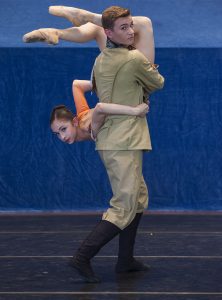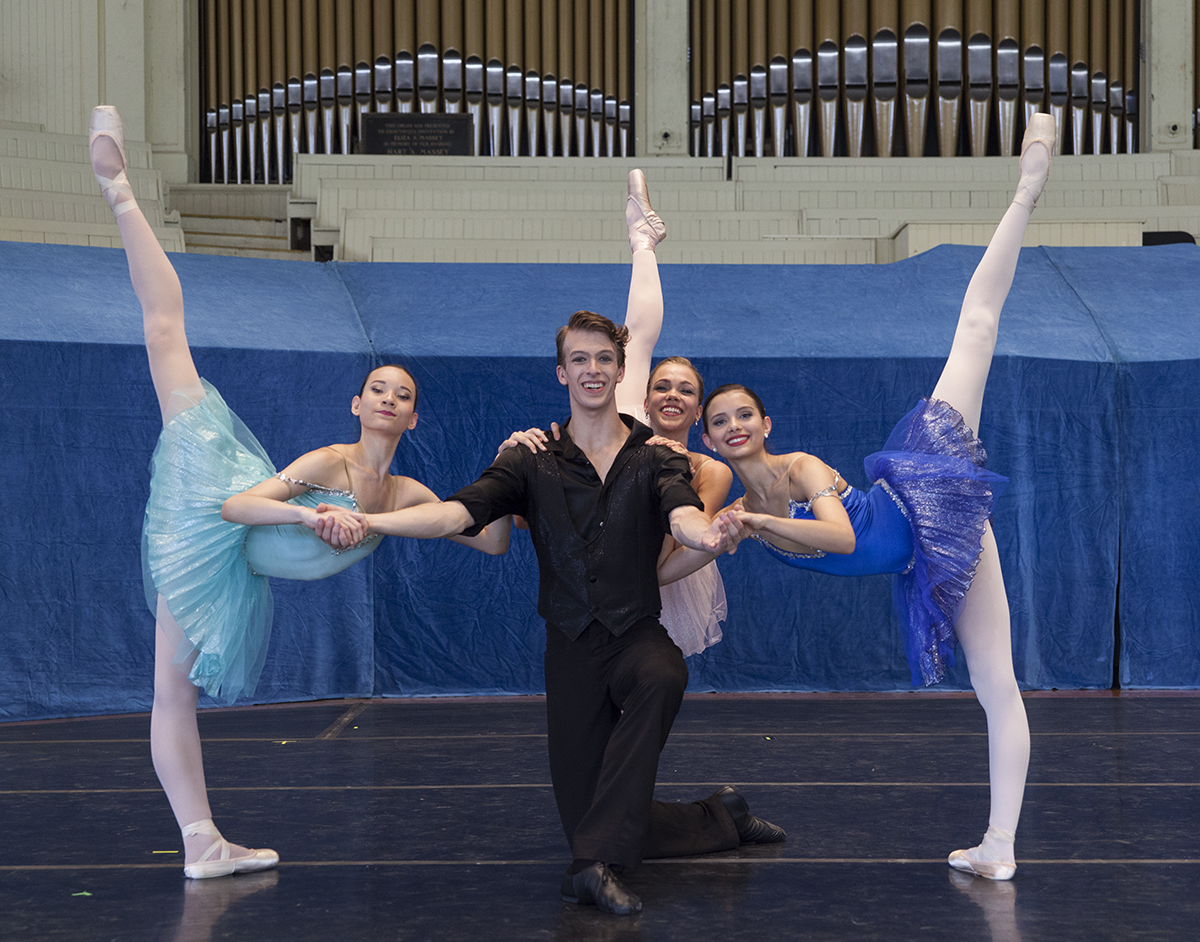The first two ballets of the Monday’s Amphitheater show — “Czech Suite” and “Nightwatch” — are different in a lot of ways. Michael Vernon’s ballet is classical, using intricate moves, precise lines and formations. Mark Diamond’s ballet is contemporary, using contemporary moves and partnering.
The Chautauqua Dance festival and apprentice students along with the Music Festival School Orchestra come together to bring musicality to life on stage at 8:15 p.m. Monday in the Amp.
The dance students performed each piece in the first Student Gala of the season July 17. The two levels were also joined by the Workshop II students, who performed two pieces.
“I’m excited to have kind of the nerves out of the way and … not have to worry and feel comfortable about the stage,” said Anna Grunewald, an apprentice.
Tonight will feature three ballets: “Czech Suite,” choreographed by faculty member Vernon; “Nightwatch,” by faculty member Diamond; and “Who Cares?,” by George Balanchine and staged by Patricia McBride.
Festival dancer Chiara Valle said the use of the orchestra will allow for more connection between the dancers and the music.
Maestro Timothy Muffitt will step aside for this concert, to allow Lio Kuokman to handle the show.
Kuokman was the David Effron Conducting Fellow at Chautauqua in 2008 is now the assistant conductor of the Philadelphia Orchestra. His education started in the Hong Kong Academy for Performing Arts before he came stateside and studied at The Juilliard School and Curtis Institute of Music.
Current conducting fellow Louis Lohraseb will lead three of the five total movements of Dvořák’s “Czech Suite” for Vernon’s ballet, which he said is a younger piece than the composer’s Symphony No. 7, which the orchestra played last week.
“It’s a different look at the same composer,” Lohraseb said. “It has a lot of influences from that part of the world.”
He said the prelude, Pastoral, uses modes that make it sound idyllic and folksy with a great harmonic color. Then, by movement, the piece changes to polka, to minuet, to a movement rich in English horn and flute solos, called Romance.
“It’s a beautiful, lyrical movement with great lines for so many different instruments,” Lohraseb said.

The distinctly American ballet is choreographed to the music of George Gershwin and will features apprentices Cara Hansvick and Michael Menghini, as well as festival dancers Rheya Shano and Elisabeth Baehman. The ballet is about a 20-minute excerpt from the original 45-minute ballet, McBride said.
In his creations, Balanchine often had dancers represent and embody different parts of the music or instruments, Hansvick said.
“It’s like you kind of become the music, which is why it’s so exciting when you get to have the live music behind you because it just changes the way that you’re dancing and the power behind it,” said Hansvick, an apprentice dancer.
The two groups will have to work together, an adjustment that requires focus to tempo.
“[Having the orchestra] definitely does add a challenge, though, because you … never know what to expect,” Grunewald said. “The orchestra is never exactly how the recording is.”
Kuokman said his first time conducting an orchestra for a ballet was at Chautauqua, and he said that it’s very different when dance is involved.
“Normally, in a concerto, I listen to the soloist,” he said. “But with dancers, I have to actually watch their movements, to coordinate the music. I will have to know what they really want, because the tempo has to be exactly what they rehearsed.”





